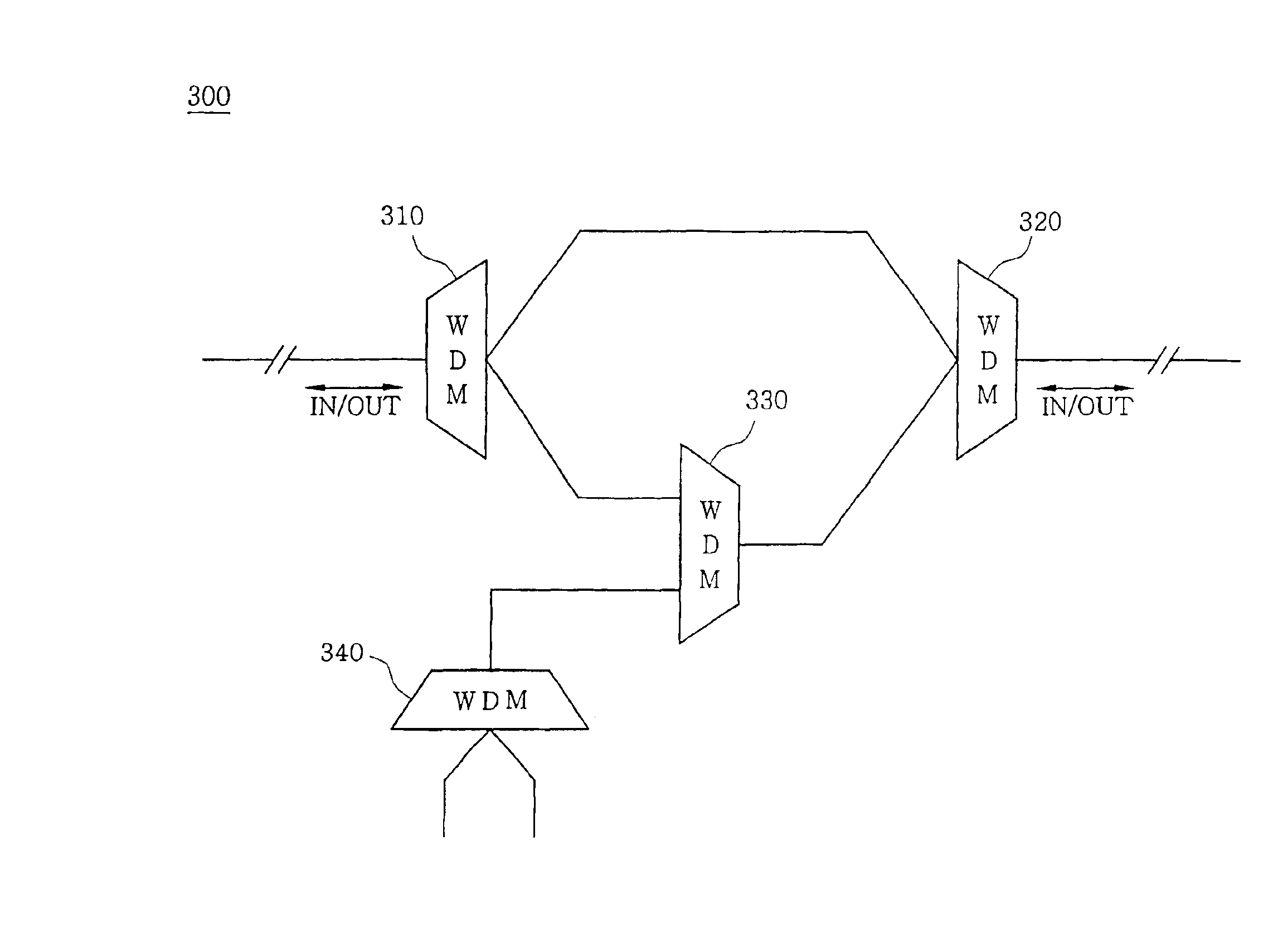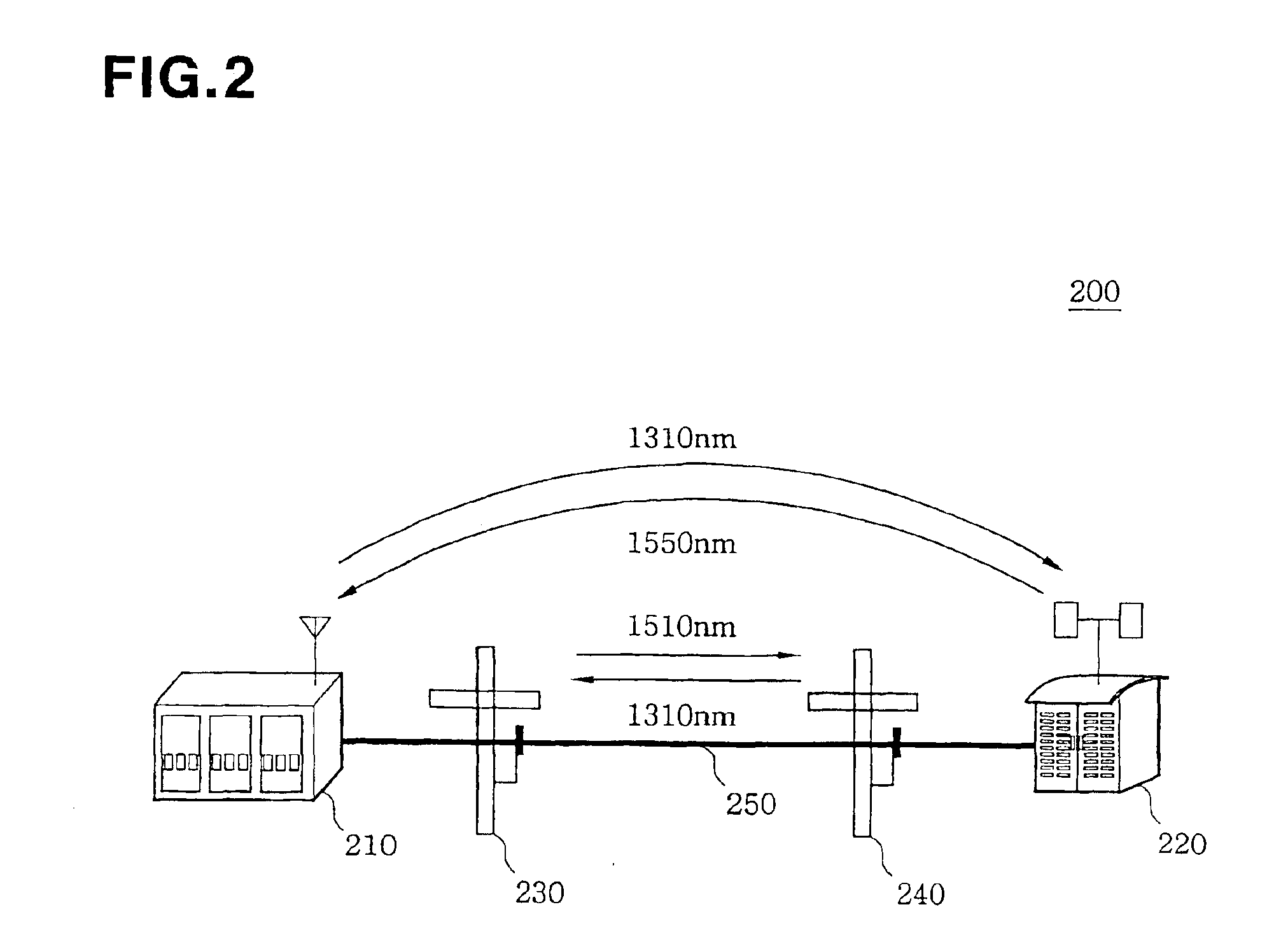Optical communication system using 4 wavelength add/drop type wavelength division multiplexing
a communication system and add/drop technology, applied in multiplex communication, optical elements, instruments, etc., can solve the problems of not being profitable for mobile communication service companies, not being able to use microwave or laser repeater systems, and the multiplexing apparatus is not that simple, so as to extend the communication coverage, the effect of high quality and extending the communication coverag
- Summary
- Abstract
- Description
- Claims
- Application Information
AI Technical Summary
Benefits of technology
Problems solved by technology
Method used
Image
Examples
Embodiment Construction
[0016]Hereinafter, a preferred embodiment of an optical communication system using a four-wavelength add / drop type wavelength division multiplexer according to the present invention will be described with reference to the attached drawings.
[0017]FIG. 2 is a schematic diagram of an optical communication system 200 according to the present invention. The optical communication system 200 includes a base station 210, a master unit 220, and slave units 230 and 240. The members of the optical communication system 200 are connected through an optical cable 250. Although only two slave units 230 and 240 are shown in FIG. 2, it will be apparently understood by those skilled in the art that more slave units can be connected according to an environment to which the present invention is applied.
[0018]The base station 210 serves as a bridge connecting an exchange (not shown) to mobile terminals. The base station 210 is connected to the exchange through a wire network and connected to mobile term...
PUM
 Login to View More
Login to View More Abstract
Description
Claims
Application Information
 Login to View More
Login to View More - R&D
- Intellectual Property
- Life Sciences
- Materials
- Tech Scout
- Unparalleled Data Quality
- Higher Quality Content
- 60% Fewer Hallucinations
Browse by: Latest US Patents, China's latest patents, Technical Efficacy Thesaurus, Application Domain, Technology Topic, Popular Technical Reports.
© 2025 PatSnap. All rights reserved.Legal|Privacy policy|Modern Slavery Act Transparency Statement|Sitemap|About US| Contact US: help@patsnap.com



